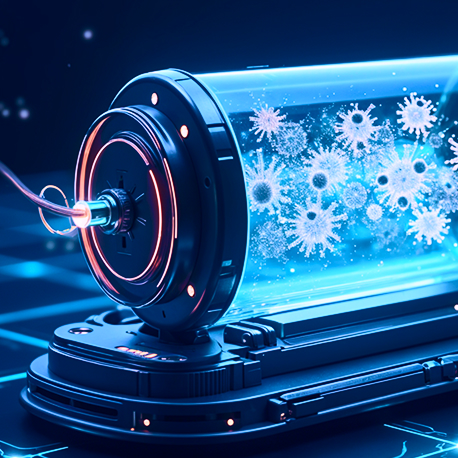Energy from Bacteria –
The Future Is Already Here!
Energy from Bacteria
The Future Is Already Here!
Microbial Fuel Cells (MFCs) – An Eco-Friendly Technology for Converting Organic Waste
into Electricity Using Bacteria.

Bio-Powered
Innovation for a
Greener Future.
We utilize cutting-edge MFC technology to convert organic waste into clean energy, promoting a sustainable and eco-friendly world.
Join us in transforming natural processes into reliable power for communities worldwide.
MFC Advantages

Electricity Generation from Organic Matter
We convert organic waste into electricity using innovative MFC technology, offering a sustainable energy solution.

Eco-Friendly Waste Recycling
MFCs promote environmental care by recycling organic materials, reducing pollution and supporting a circular economy.

Continuous and Reliable Energy Source
Our systems provide consistent, renewable energy, ensuring uninterrupted power supply for various applications.

Harnessing Natural Microorganisms
We utilize bacteria to produce clean energy, mimicking natural processes for efficient and eco-friendly power generation.
Applications of Microbial Fuel Cells
Microbial Fuel Cells (MFCs) have a wide range of applications, from wastewater treatment to renewable energy. These innovative systems provide sustainable, efficient, and eco-friendly power solutions for various industries.

Wastewater Treatment Plants
MFCs efficiently clean wastewater while generating electricity, ensuring eco-friendly and energy-positive treatment.

Biosensors
These systems monitor pollution in real-time, providing crucial insights for environmental safety and research.

Alternative Energy
MFCs offer a reliable, renewable power source for remote locations and off-grid applications.

Autonomous Sensors
Self-sustaining MFC-powered sensors operate independently in hard-to-reach areas, ensuring continuous data collection.
How It Works

Organic Waste Fed into the Fuel Cell
Organic waste, such as wastewater, food scraps, or biomass, is directed into the MFC system. This organic material acts as the primary energy source, fueling the process of clean energy generation without harmful emissions.

Microorganisms Break Down Organic Matter and Release Electrons
Inside the anode chamber, naturally occurring bacteria feed on the organic waste. During this metabolic process, electrons and protons are released as byproducts, initiating the generation of electrical energy.

Electricity Generated and Stored
The free electrons travel through an external circuit, creating an electric current. Simultaneously, protons pass through a membrane to the cathode chamber, where they combine with oxygen to form water. The generated electricity can then be stored or directly used to power devices, facilities, or entire infrastructure systems.




 English
English Bulgarian
Bulgarian
 Our Mission
Our Mission Our Contact Info
Our Contact Info